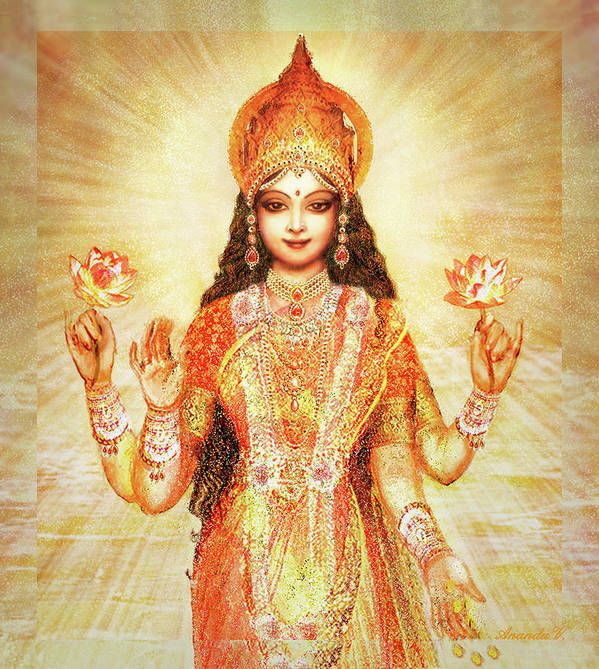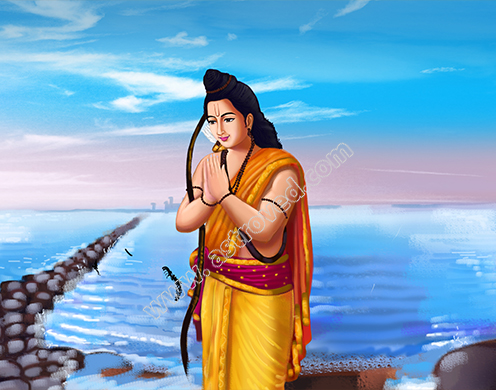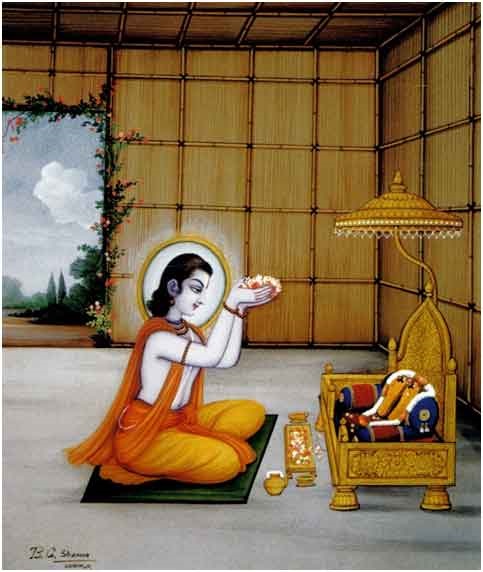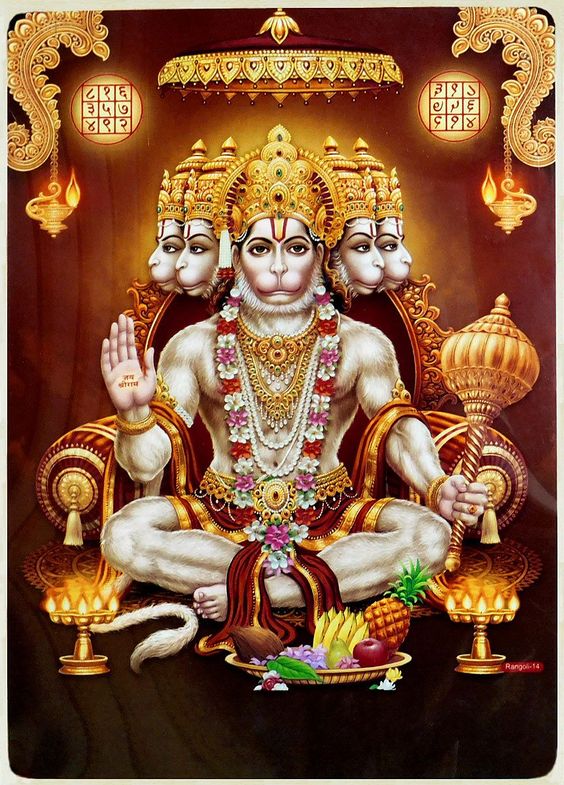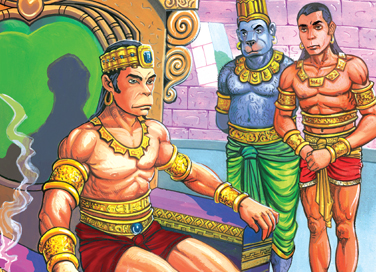Ram
Rama is the main character of the tale. Portrayed as the seventh avatar of god Vishnu, he is the eldest and favorite son of Dasharatha, the king of Ayodhya and his Chief Queen, Kausalya. He is portrayed as the epitome of virtue. Dasharatha is forced by Kaikeyi to command Rama to relinquish his right to the throne for fourteen years and go into exile. Rama kills the evil demon Ravana, who abducted his wife Sita, and later returns to Ayodhya to form an ideal state.
Sita
Sita is another of the tale's protagonists. She was the blood of sages who sacrificed their lives to develop the powerful force to get rid of earth from demons. This blood was collected in a pot and was buried in Earth, so she is called the daughter of Mother Earth, adopted by King Janaka and Rama's beloved wife. Rama went to Mithila and got a chance to marry her by breaking the Shiv Dhanush. Sita is portrayed as the epitome of female purity and virtue.
Lakshman
Lakshmana is a younger brother of Rama, who chose to go into exile with him. He is the son of King Dasharatha and Queen Sumitra and twin of Shatrughna. Lakshmana is portrayed as an avatar of Shesha, the nāga associated with the god Vishnu. He spends his time protecting Sita and Rama, during which time he fights the demoness Shurpanakha. He is forced to leave Sita, who was deceived by the demon Maricha into believing that Rama was in trouble.
Bharata
Bharata is the son of Dasharatha and Queen Kaikeyi. when he learns that his mother Kaikeyi has forced Rama into exile and caused Dasharatha to die brokenhearted, he storms out of the palace and goes in search of Rama in the forest. When Rama refuses to return from his exile to assume the throne, Bharata obtains Rama's sandals and places them on the throne as a gesture that Rama is the true king. Bharata then rules Ayodhya as the regent of Rama for the next fourteen years.
Hanuman
Hanuman is a vanara belonging to the kingdom of Kishkindha. He is an ideal bhakta of Rama. He is born as son of Kesari, a Vanara king in Sumeru region and his wife Añjanā. He plays an important part in locating Sita and in the ensuing battle. Hanuman is incarnation of Lord Shiva. Hanuman's role in the battle between Rama and Ravana is huge. He is the one who flies across the oceans, locates the exact place where Sita is imprisoned and brings this information back to Rama.
Sugriva
Sugriva was a vanara king who helped Rama regain Sita from Ravana. He had an agreement with Rama through which Vali – Sugriva's brother and king of Kishkindha – would be killed by Rama in exchange for Sugriva's help in finding Sita. Sugriva ultimately ascends the throne of Kishkindha after the slaying of Vali and fulfills his promise by putting the Vanara forces at Rama's disposal. He was son of God Surya and was married to Rumā.
SIGNIFICANCE
Rama is one of the most popular deities worshipped in the Hindu religion. Each year, many devout pilgrims trace their journey through India and Nepal, halting at each of the holy sites along the way. The poem is not seen as just a literary monument, but serves as an integral part of Hinduism and is held in such reverence that the mere reading or hearing of it or certain passages of it, is believed by Hindus to free them from sin and bless the reader or listener. According to Hindu tradition, Rama is an incarnation (Avatar) of god Vishnu. The main purpose of this incarnation is to demonstrate the righteous path (dharma) for all living creatures on earth.
The Ramayana was an important influence on later Sanskrit poetry and Hindu life and culture. Its most important moral influence was the importance of virtue, in the life of a citizen and in the ideals of the formation of a state or of a functioning society. The basic teaching fo Ramayana is that no matter how powerful evil is, it will always be defeated by Good. Truth always wins, no matter how vicious or poisonous lie is because even a bitter truth oozes with positivity and the sweetest lie has the darkest agenda behind it. The win of good over evil is a universal fate.
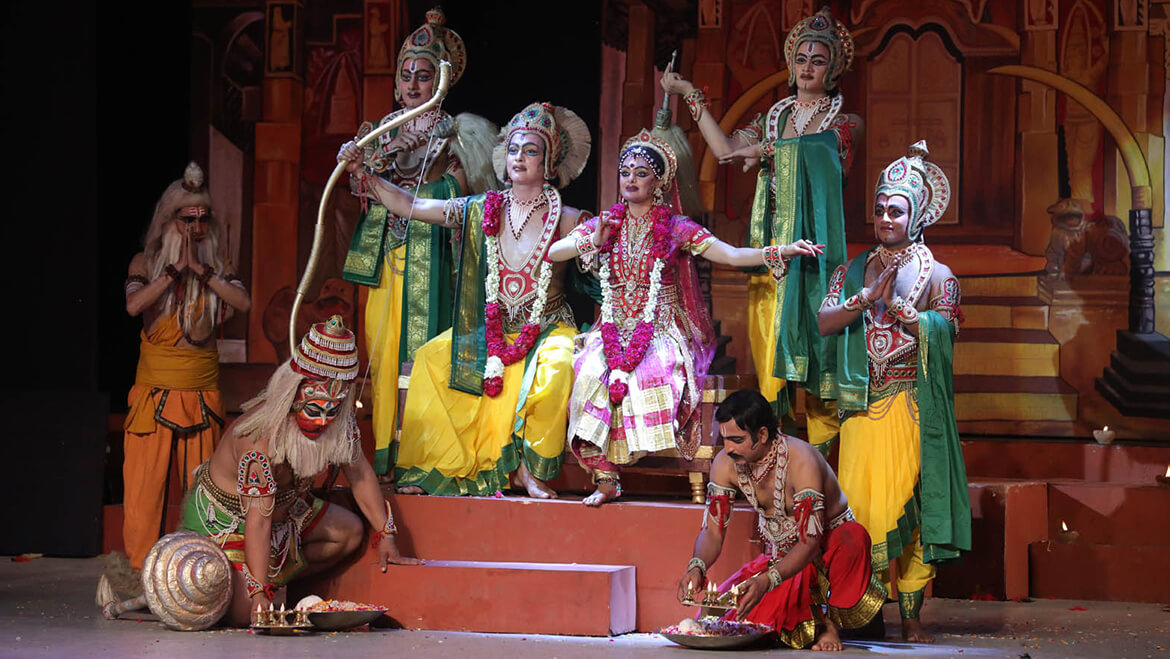
Ram-Leela
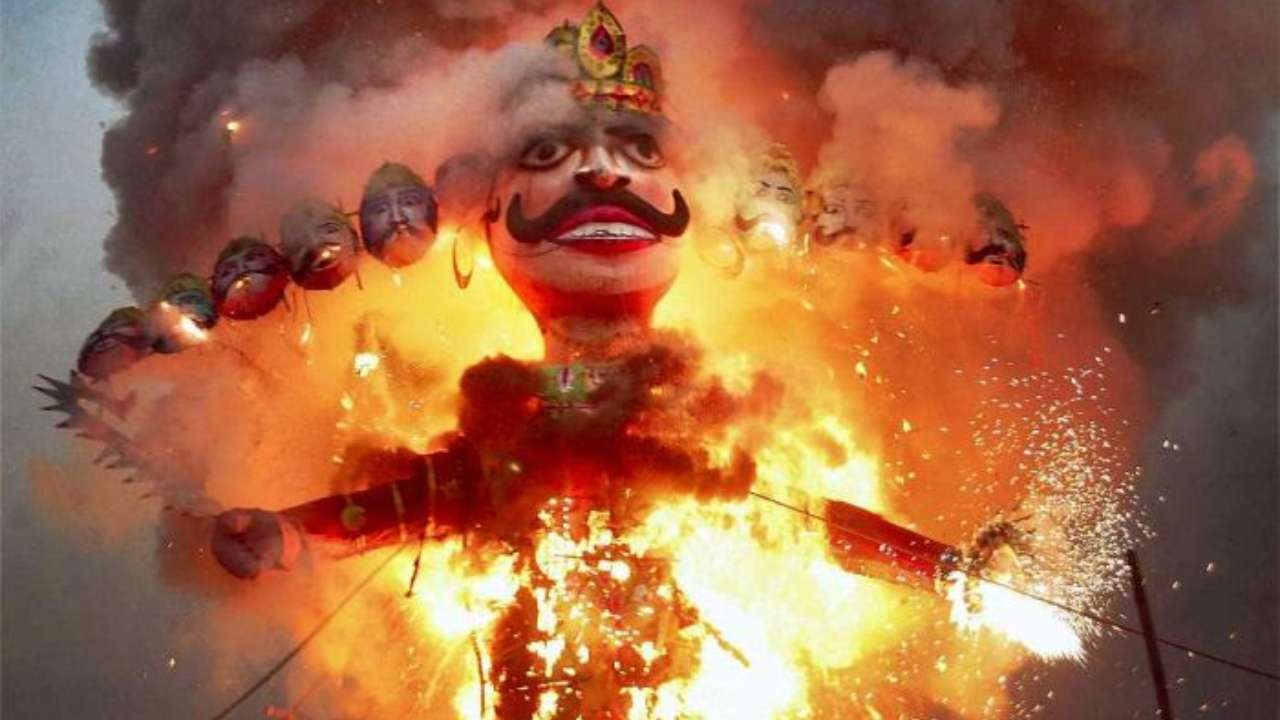
Ravan-Dahan
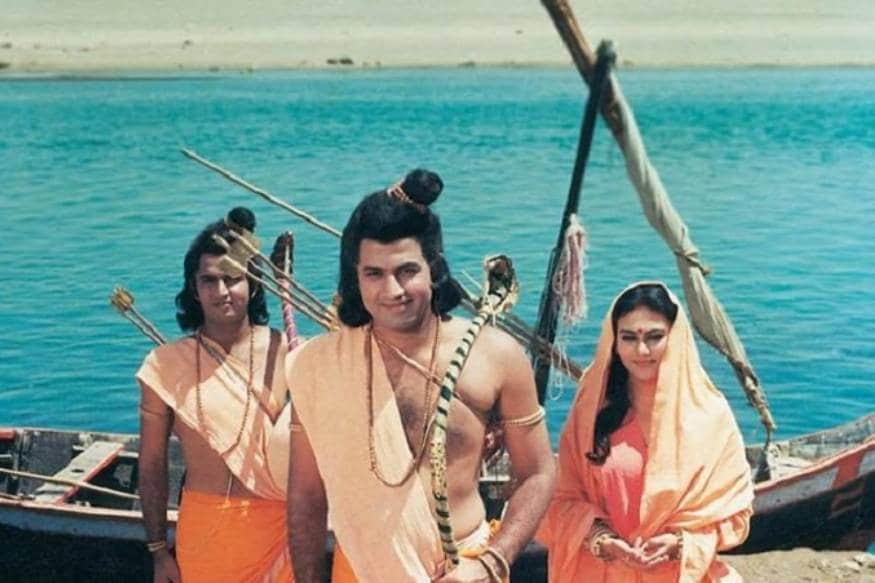
Ramayana Serial
रामम् दशरथम् विद्धि माम् विद्धि जनक आत्मजाम् |
अयोध्याम् अटवीम् विद्धि गच्च तात यथा सुखम् ||
Impact on Culture and Art
One of the most important literary works of ancient India, the Ramayana has had a profound impact on art and culture in the Indian subcontinent and southeast Asia with the lone exception of Vietnam. The story ushered in the tradition of the next thousand years of massive-scale works in the rich diction of regal courts and Hindu temples. It has also inspired much secondary literature in various languages, notably Kambaramayanam by Tamil poet Kambar of the 12th century, Telugu language Molla Ramayanam by poet Molla and Ranganatha Ramayanam by poet Gona Budda Reddy, 14th century Kannada poet Narahari's Torave Ramayana and 15th century Bengali poet Krittibas Ojha's Krittivasi Ramayan, as well as the 16th century Awadhi version, Ramacharitamanas, written by Tulsidas.
Ramayanic scenes have also been depicted through terracottas, stone sculptures, bronzes and paintings. These include the stone panel at Nagarjunakonda in Andhra Pradesh depicting Bharata's meeting with Rama at Chitrakuta (3rd century CE). The Ramayana became popular in Southeast Asia during 8th century and was represented in literature, temple architecture, dance and theatre. Today, dramatic enactments of the story of the Ramayana, known as Ramlila, take place all across India and in many places across the globe within the Indian diaspora.

